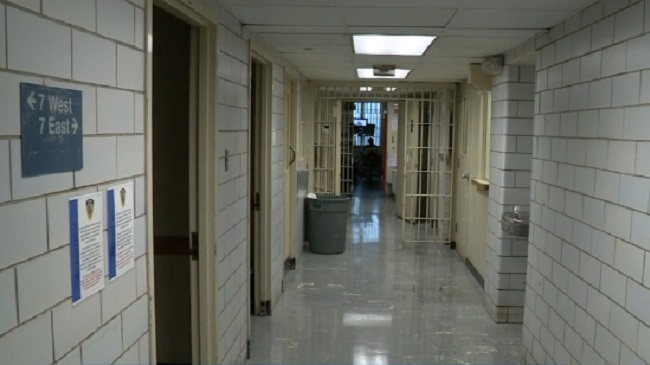
A resolution being introduced to the Dane County Board of Supervisors tonight would “immediately halt all planning, design, architecture, and construction of a new jail facility.”
Supervisor Elizabeth Doyle, the chair of the Health and Human Needs committee, announced the resolution in a Facebook post Wednesday and said she intends to introduce it officially and seek cosponsors at tonight’s County Board meeting.
In an interview Wednesday, Doyle said she has been hearing from members of the community.
“I have been getting a lot of outreach from folks in District 1, about what the jail population looks like in light of COVID, and lots of questions about if that has implications for the jail project,” she said.
She also said she’s spoken to other supervisors and had garnered support from several. Supervisor Heidi Wegleitner was the only one to express support publicly as of Wednesday evening.
“I’m still working on confirming folks’ support publicly, but really have been having some great conversations with people,” she said. “And it sounds like a lot of folks are really taking the time. I think one of the elements is that there’s a lot of new supervisors compared to when a lot of these discussions happened last year and even previous to that.”
Last June, the County Board approved $74 million in funding to add to $76 million approved in 2017 to build a new eight-story jail facility in downtown Madison. Many community members were vocally opposed to the project.
At the time, supporters of the new jail said the existing facility is overcrowded and unsafe. Opponents said a new jail would only uphold the status quo and that reform of the criminal justice system, including alternatives to incarceration, was preferable.
Doyle said the Dane County Sheriff’s Office response to the coronavirus pandemic proved that the jail population could be reduced. Between mid-March and mid-April, in the early stages of the pandemic, authorities reduced the jail population by 40 percent, from 722 on March 15 to 441 on April 19.
“I think what’s different now is last year, some very great questions were asked and even previous to that, about how low can we get the jail population? What alternatives can we look at?” Doyle said. “Folks said that (the current new jail plan) was the best we could do, but we’ve seen we have a concrete example of when unprecedented circumstances arise, we can do better … I feel like all of us on the board really need to take this seriously, and give space and opportunity to have these conversations.”



